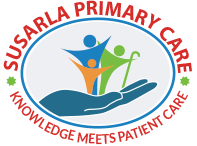Breast cancer is the most common non skin cancer in women and accounts for about 30% of all new cancers in the United States. The highest incidence of breast cancer is between 70-74 years of age. A risk assessment tool can be used to determine individual risk and help guide screening decisions.
Here are some simple questions and answers about breast cancer screening.
What is a mammogram?
A mammogram is an x-ray of the breast. It is the most common screening test for breast cancer. When you get a mammogram, you stand or sit at an x-ray machine. The machine pushes on your breast and takes a picture of the inside of your breast. Your doctor can look at the picture and check for cancer. When you get your result of your mammogram you should look for BIRADS (Breast Imaging-Reporting and Data System). This number will give you information about whether your mammogram is benign or additional screening tools are needed.
Why should I get a mammogram?
Breast cancer is the most common serious cancer in women. One out of every eight women gets it. Some women have an even higher risk, like if their mother or sister had breast cancer. Finding breast cancer early can allow for better treatment and keep you from dying from the cancer.
How often should I get a mammogram?
You should have one every one or two years. It depends on your age and whether you have a high risk of breast cancer. Your doctor can help you decide what age to start and stop, and how often you should get one.
The USPSTF (U.S. Preventive Services Task Force) recommends biennial screening mammography for average risk women 50 to 74 years of age. Screening mammography from 40-49 is an individualized decision based on risk factors.
Are mammograms covered by medical insurance?
Yes, if you are at least 40 years old. You should not have to pay anything, not even a copayment.
What is an easy screening tool to check my risk for breast cancer?
I personally like the Gail Model for Breast Cancer Risk. It’s simple and easy. It is one of several risk assessment models that can help determine the absolute 5 year risk and lifetime risk of developing breast cancer.
When are other imaging tools used for breast cancer screening?
Ultrasound – The American College of Radiology recommends ultrasound along with mammogram for breast cancer screening. Your primary care physician can first order a screening mammogram. If your screening mammogram shows dense breasts, then a diagnostic mammogram with an ultrasound can be considered.
MRI – MRI has been studied as a screening tool in those with dense breasts. It is an effective screening tool, however not covered by many insurance carriers.
If you have any questions or concerns, please call me
